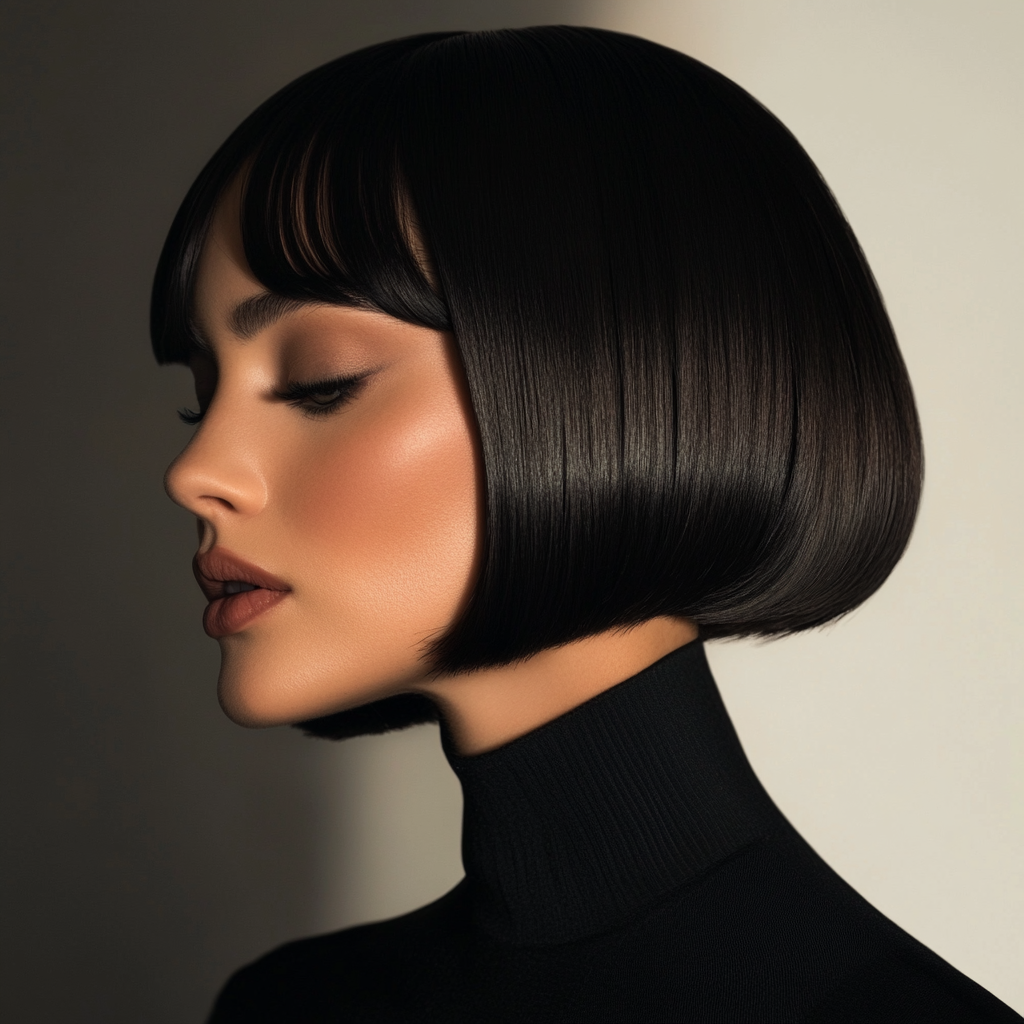The Evolution of the Jawline Bob: A Modern Take on a Classic Cut
When Irene Castle unexpectedly cut her hair before an appendectomy in 1915, she inadvertently sparked a fashion revolution that would later be known as the “Castle Bob.” Initially concealed beneath a turban, this practical hairstyle gradually became a powerful statement, resonating with women who sought ease and liberation daily during World War I. Irene Castle’s bold move challenged societal norms, as long hair was traditionally seen as a symbol of femininity. The bob’s popularity surged further as it became associated with the women’s suffrage movement, reflecting the changing role of women in society. Despite media criticism and professional restrictions, the bob’s practicality outweighed these obstacles. Hairdressers were initially hesitant, but the demand grew as women embraced the freedom it offered. The Castle Bob became more than a trend; it catalyzed change, reshaping perceptions of women’s roles and identities.
Cultural Shift of the Roaring Twenties
The Roaring Twenties marked a significant cultural shift that redefined modernity and individualism. You witnessed an era where economic and technological advancements fueled the flappers’ rebellion. These young women, flaunting bobbed hair and short skirts, embraced a bold lifestyle, challenging societal norms with each dance step. The jazz influence was undeniable, as the music’s syncopated rhythms mirrored the decade’s vibrant energy. Icons like Louis Armstrong and Duke Ellington led this musical revolution, drawing flappers into bustling jazz clubs. Modern technology, such as radios and automobiles, enhanced this cultural transformation, connecting people to city nightlife and the latest trends. As sports heroes and movie stars captured the public’s imagination, cities filled with new cinemas and gigantic sports stadiums. As women gained independence and entered the workforce, they carved out new roles, shaping a future defined by innovation and expression.
Mid-Century Sophistication and Revolution
Emerging from the cultural vibrancy of the Roaring Twenties, the mid-century era brought a sophisticated revolution in hairstyles, epitomized by the jawline bob. As mid-century fashion evolved, this hairstyle innovation gained traction, with celebrities like Doris Day and Audrey Hepburn popularizing the structured bob. This smooth, jaw-length cut with flicked ends symbolized glamour and sophistication. The 1960s saw Vidal Sassoon’s geometric five-point cut, a masterpiece of sleek lines and precise techniques, signaling modernity and independence. Mary Quant’s modern bob added an English twist, inspiring new variations. As the bob haircut is known for being universally flattering, the jawline bob adapted seamlessly to changing fashion trends, embodying liberation through hair while maintaining its iconic short length and blunt ends, influencing global style.
Diverse Expressions of the 1970s and 1980s
While the jawline bob maintained its classic allure, the 1970s and 1980s introduced diverse expressions that redefined this iconic hairstyle. Cultural influences and pop icons heavily influenced hairstyle trends during this era. The 1970s embraced natural and soft styles, with flipped layers, inverted bobs, and the pageboy look. Influential figures like Dorothy Hamill and Farrah Fawcett shaped this decade, while punk styles added a rebellious twist. The 1980s amplified volume and creativity, with asymmetrical cuts and bold colors becoming mainstream. The era’s extravagant flair was defined by big hair, crimped bobs, and buzz cuts. This transformation reflected individuality and self-expression, challenging traditional styles. The introduction of retro bobs in the 1990s combined asymmetrical form with large, defined waves, further enhancing the bob’s wash-and-go nature.
Contemporary Interpretations and Timeless Appeal
As you explore the world of contemporary hairstyles, the jawline bob stands out for its unmatched versatility and timeless allure. This cut is a masterclass in adaptability, effortlessly framing your face while highlighting your jaw and cheekbones. Its length, delicately poised between chin and jaw, balances short and long hair dynamics. Embrace various styling techniques to suit your mood—from sleek sophistication to messy textures. The jawline bob caters to every face shape, whether you’re working with waves, curls, or straight hair texture.
Customization is key to its enduring popularity. Layering introduces movement and volume, invigorating the style with a textured edge. Whether opting for asymmetry or incorporating bangs, these elements transform the bob, ensuring its relevance in modern fashion. This universally flattering hairstyle is suitable for women of all ages, offering a chic and elegant option for mature women while providing a trendy and edgy look for younger women.
Conclusion
You’ve explored the vibrant journey of the jawline bob, a hairstyle consistently turning heads across decades. This cut has never lost its edge, from its accidental origins to its modern transformations. As you embrace this style today, remember it’s not just a haircut—it’s a statement. So, when you wear it, you’re not just following a trend but setting one. After all, in fashion, the devil’s in the details.
